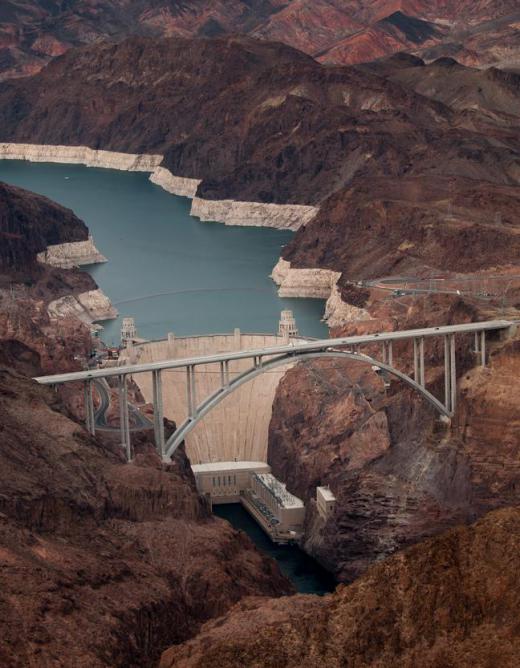The term spandrel has been adapted from its original use in medieval architecture to encompass a number of meanings, all having to do with architecture or construction. In medieval architecture, it denotes the approximately triangular spaces that would appear to the upper right and left of an arch. With respect to modern arches, this term denotes the area between the arch and the boundary around it — such as a roadway above. In architecture, it may refer to the space between the top of a window on one floor and the bottom of the window directly above it on the next floor up. Spandrel beams are load-bearing beams around the perimeter of a building that extend from column to column.
Arched bridges may be classified as open-spandrel or closed-spandrel depending on the configuration of the area between the arch and the road above it. The roadway over an open-spandrel bridge is supported on a system of structural members resting on the top of the arch. In closed-spandrel bridges, the roadway is supported on earth fill beneath it and above the arch leaving no open space in the area between the arch and the roadway. A potential failure mode of such bridges is excessive moisture in the fill material. This may be caused by leakage of water lines, poorly routed storm runoff, or moisture ingress via a worn or cracked roadway surface.

In architectural design, the space between the top of a window on one floor and the window sill directly above it may also be called a spandrel. It not only serves an aesthetic function, but also provides protection by way of isolation in the event of a fire. Material selection may take both of these functions into account.
A stone or metal spandrel panel may be used to achieve a smooth, finished exterior appearance by hiding aesthetically unappealing construction from view. Glass can be used for decorative effect with particular colors and shapes or to create the illusion that nothing is present in the space. Such spandrels are not generally load-bearing structural elements.

Spandrel beams are load-bearing structural members around the perimeter of a floor of a building. Not only may they support loads from the roof and other floors, they may also help support a building's walls. For example, walls expected to experience significant forces from wind may be anchored to these beams to better distribute the load.
While an interior beam may be loaded on both sides, a spandrel beam is loaded on one side only. This raises the possibility of twisting of the beam in torsion, which is a concern that must be taken into account in the design of the structure. Strategic material selection can help mitigate this design issue by taking advantage of materials with compatible ductilities, compressive strengths, and other related material properties.
